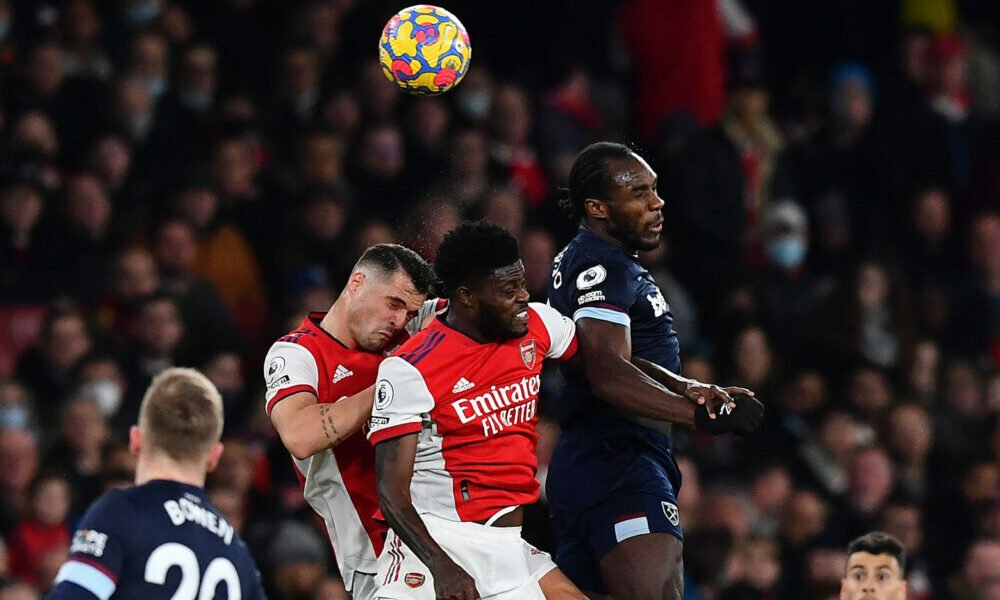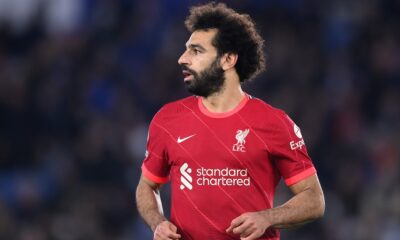Features
How New Rules Could Reduce the Risk of Concussion in Football
2021 saw one of the biggest changes in football to date — the introduction of permanent concussion substitutes in a brand-new trial.
One of the greatest dangers of concussion in football stems from the fact that concussion can be an invisible injury. This makes it difficult for team physios and medics to diagnose concussions, especially within the short timeframes allocated for return-to-play decisions in professional football. And, even when concussions are diagnosed, it can be equally challenging for medics to gauge how serious a concussion is.
Fortunately, organisations like The Drake Foundation fund research into the possible connections between concussion in football and long-term brain health outcomes. As research findings add to the growing evidence that head injuries may cause long-term brain health problems and might lead to neurodegenerative diseases, organisations and individuals around the world are encouraging lawmakers to update and modernise rules in the game of football.
2021: The Introduction of Permanent Concussion Substitutes
2021 saw one of the biggest changes in football to date — the introduction of permanent concussion substitutes in a brand-new trial. Permanent substitutions allow medics and team physios more time to assess players away from the pitch and determine whether they are well enough to carry on playing. Meanwhile, putting a concussion substitute in place avoids the disadvantage of one team being “one man down”, which can put unnecessary pressure on players and medics.
Although this introduction of permanent substitutions marks a step forward in football, it could be argued that the game’s lawmakers should take more significant steps to protect players. This is because the effects of a concussion can arise long after a player has sustained a head injury. Therefore, the assessment time for a head injury may not always be enough to qualify the significance of the head impact, even when attentive medical teams adhere to safety guidelines. So, when a player returns to the game, there’s no guarantee it’s safe for them to do so. That said, a longer assessment period could make return-to-play decisions much safer, and temporary substitutions could be the answer.
There are currently many incidents of players returning to play with a potential head injury, only to then leave the pitch when their symptoms become more obvious. Temporary substitutions could provide medical teams the time they need to make assessments when players sustain concussions and other head injuries. Teams could continue to play with an equal number of players while medical teams assess injured players, reducing pressure on all involved. However, temporary substitutions may increase their risk of players sustaining muscle injuries when they return to play having cooled down during a prolonged concussion check.
Three Examples of Concussion Incidents in Football
Football has seen countless player concussions and head injuries over the years. Three recent, significant incidents include:
- Leeds’ Robin Koch, who suffered a head injury in a game against Manchester United and, within 15 minutes of coming back onto the pitch, felt unwell and had to withdraw from the match.
- Liverpool’s Sadio Mane, who clashed heads with Josimar Dias, better known as Vozinha, the goalkeeper for Cape Verde, at the Africa Cup of Nations. After returning to the game and scoring the opening goal, Mane later collapsed and required hospital treatment for a concussion.
- Bayern Munich and France’s right-back Benjamin Pavard, who collided heavily with Germany’s Robin Gosens in the European Championship. When speaking to The Athletic about this, Pavard said he was “a little knocked out for 10, 15 seconds”. Headway, the brain injury charity, expressed that the episode had been “sickening to watch”. However, France’s report to the Union of European Football Associations (UEFA) insisted that Pavard had not lost consciousness.
Encouraging Lawmakers to Make Changes
Because of incidents like these, many organisations and individuals are now pushing for the game’s lawmakers to update safety guidelines in professional football. Maheta Molango, the chief executive of the Professional Footballers’ Association (PFA), the union in English football, is just one individual who believes the protocols in place may not be enough to prioritise player safety.
He says: “Why don’t we get the players off the field, get them checked out and then, if they’re ready, they can come back? It’s clear to us that one day, there will be a serious issue, and it’ll be too late. You could get the first concussion (to a player), and then the second one is the final (fatal) one. We need to be very aware. Let’s avoid a tragedy before it takes place.”
Even after a thorough examination with balance and cognitive tests, deciding whether to remove a player from the pitch is still a tough call for medical teams to make.
Concussion in Football Today
Thankfully, the severity of concussion in football has become more widely recognised over the last 10 years. Awareness surrounding the long-term implications of head injuries is also growing, especially as several retired players have been diagnosed with dementia. Many of these players made up the 1966 World Cup winning team, including Sir Bobby Charlton, Jack Charlton, Nobby Stiles, Martin Peters, and Ray Wilson.
Other footballers who have been diagnosed with neurodegenerative diseases include Barry Pierce, Peter Bonetti, Chris Chilton, Mike Sutton, John Talbut, Jeff Astle, Stevie Chalmers, Mike Tindall, Jimmy Conway, Frank Kopel, Tommy Carroll, Alan Jarvis, Billy McNeil, Duncan Forbes, and Kevin Moore. The list goes on.
Today, there is a mandatory six-day rest period for any professional player affected by a concussion, which emphasises the importance of avoiding the risk of a second head injury while a player may still be recovering from the initial head impact. This rest period can help protect players from loss of balance, loss of memory, or seizures. According to the Football Association (FA), “Incorrect management of concussion can lead to further injury”.
The Need for Temporary Substitutions
The rules at the moment are clear: any player incurring the primary concussion symptoms (headaches, dizziness, memory disturbance, or balance problems), must stop playing immediately. A loss of consciousness is another red flag, although this only occurs in 10% of concussion cases. However, concussion assessments can pose a grey area as some head injuries don’t involve a concussion. And medics have a limited time to decide whether a player can return to the pitch, which gives them little time to make an informed decision.
One English Football League (EFL) physio says, “The way we get trained, with that high emphasis on ‘If in doubt, sit them out’, no medical staff member would see a traumatic injury to the head, take them off the pitch, and then return them to play if there was an element of doubt”.
IFAB’s Response to the Request for Temporary Substitutions
FIFPRO, an international union that represents more than 65,000 players, appears to hold a similar stance. In April 2021, the union wrote to the International Football Association Board (IFAB), encouraging the game’s lawmakers to introduce temporary substitutes to the football concussion trials. FIFPRO cited compelling evidence that temporary substitutes would benefit footballers. This evidence included a poll of 96 professional football clubs’ doctors from English, French, and Belgian leagues, 83% of whom agreed temporary substitutes “would inform an effective part of any future protocol”.
Temporary substitutes would allow medics more time to assess players who have sustained head injuries and allow time for video replays of the incident. This would be especially useful in cases where physios and medics didn’t properly witness the injury. On top of this, both rugby codes have already employed temporary substitutions.
However, IFAB resisted the proposal, arguing that there are many reasons not to introduce temporary concussion substitutions, such as the ongoing threat of a delayed concussion, the need for complicated and time-consuming assessments, and the risk of players sustaining muscle injuries when they return to the pitch after cooling down during the prolonged concussion checks. Although IFAB concluded that “additional permanent substitutes are the more appropriate way forward”, the board may change its stance if research, which is due for completion at the end of the 2021-22 season, favours an approach that uses temporary replacements.
In the meantime, the Premier League has allowed every team to have two additional replacements for players who have incurred concussions or suspected concussions. The opposing team may also use an additional substitute for every concussion substitute used to avoid teams taking advantage of the revised rule.
Funding Research on Head Injuries
The Drake Foundation funds pivotal research into the short- and long-term impact that head injuries can have on individuals, including sports professionals and those who have been exposed to intimate partner violence (IPV). Concussion in football sits at the heart of three of its studies: the HEADING Study, the Drake Football Study, and the Drake Football Concussion Study. The Foundation is continuing to contribute to a greater understanding of brain injuries and triggering essential change, particularly in the sports science arena.
















